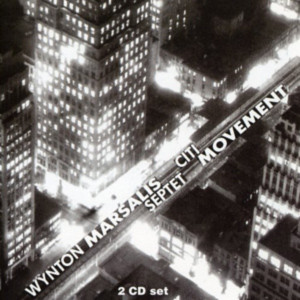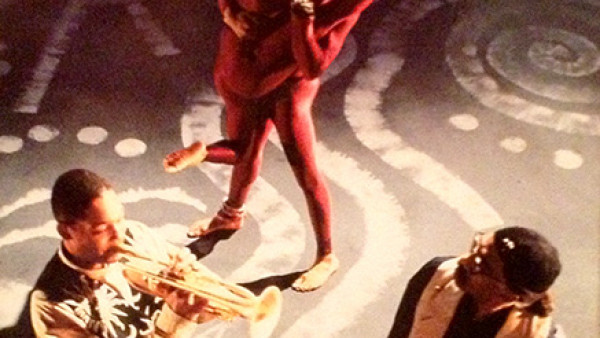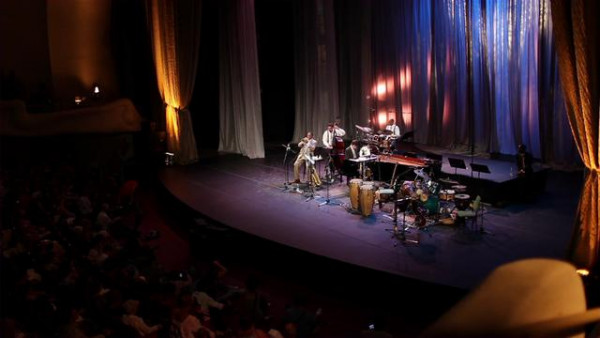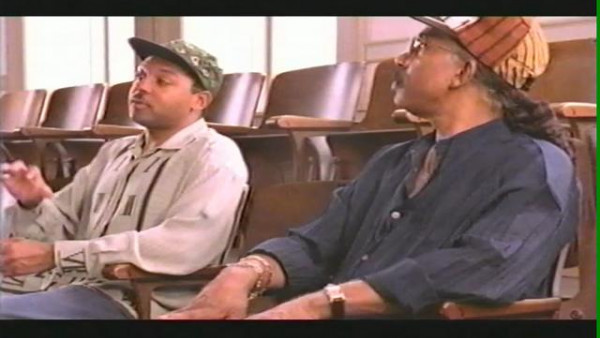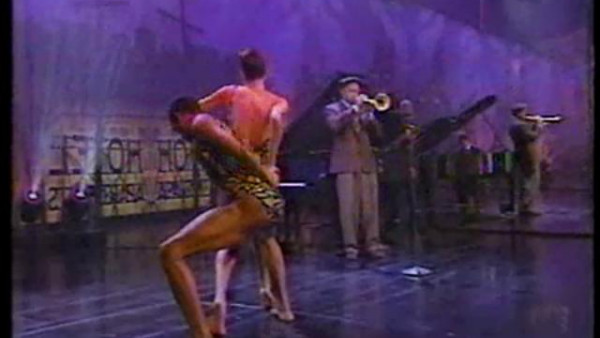The Return of the Broadway Boogie-Woogie
THE choreographer Garth Fagan and Wynton Marsalis, the co-founder and artistic director of Jazz at Lincoln Center, go way back. They met in the 1980’s when Mr. Fagan, a jazz aficionado, took his dancers to New York clubs to hear Mr. Marsalis play. “I knew we could learn from him,” Mr. Fagan said in a recent conference call with Mr. Marsalis. “I sensed we saw things the same way.” Eventually he invited Mr. Marsalis to a rehearsal at the company’s headquarters in Rochester.
“I was young then — 23 or 24,” Mr. Marsalis said, “and for him to do a performance just for me, to show me that kind of respect, like I was Duke Ellington, was actually startling. I tried to understand the choreography as well as I could with my level of sophistication, which was very little at the time. But more than the choreography, I knew him. I could understand the genius of the man and his depth of understanding of world cultures, Afro and not Afro.”
Mutual admiration led to collaboration. When the Brooklyn Academy of Music commissioned a full-evening work from Mr. Fagan for the Next Wave Festival in 1991, he asked Mr. Marsalis to compose the score. The result, “Griot New York,” with dramatic sets by the sculptor Martin Puryear, is often cited as Mr. Fagan’s finest achievement.
But because of scheduling difficulties, the work, which vividly captures the city’s vitality and diversity as well as its chilling indifference to the disenfranchised, has not been performed in New York in its entirety since its premiere. On Wednesday, however, Garth Fagan Dance, accompanied by Mr. Marsalis on trumpet with his septet, will perform the piece at Jazz at Lincoln Center. On other programs during the troupe’s engagement through Nov. 13, are the premiere of “Life: Dark/Light” set to a score by the jazz violinist Billy Bang, excerpts from “Griot New York” and other works from the repertory.
Mr. Fagan, 65, who choreographed the Broadway hit “The Lion King,” and Mr. Marsalis, 44, warmly recalled their collaboration on “Griot New York,” which began with Mr. Fagan sending Mr. Marsalis a poem he had written with the same title, sketching out some of his themes. Like a West African griot, a storyteller who preserves traditions and culture, Mr. Fagan’s work touches on what he saw as New York’s most striking qualities, joyful and sad. He included references to African countries, and places with beautiful names like Bujumbura, and dealt with slavery and AIDS. “Being the artist he is,” Mr. Fagan said, “I knew he could grasp what I was trying to do.”
There had never been any question that Mr. Fagan would choose jazz for “Griot New York.” “Jazz is America’s music,” he said. “It has all the structure of classical music and all the freedoms and passions of America. We do real jazz dancing to this man’s score. We become like sidemen, dancing in and out of the music.”
Already trained in a vigorous, highly rhythmic style — a fusion of African, Caribbean and modern dance and ballet techniques — Mr. Fagan’s dancers find in “Griot New York,” with many sequences set to calypso, blues and other social dance forms, an occasion to display their extraordinary virtuosity and musicality.
Mr. Marsalis said that he felt completely at ease composing for dance. “Our music is dance,” he said of jazz. “A lot of our big grooves are called dance grooves. It’s much better for us when it’s with dance. Garth brings a new consciousness to us. We see his work and say, ‘Man, look at this counterpoint and these different things he has in his dances, dancers dancing in different times, using their bodies in different ways.’ The stuff is so inspiring to us.”
With Mr. Fagan’s themes in mind, Mr. Marsalis wrote a score with sudden and abrupt contrasts similar to what he admires in certain paintings. “The form that I often used is collage,” he said. “It cuts from one thing to another, like New York from one block to another, like Stuart Davis’s paintings. Or a certain type of Romare Bearden collage: it has the feeling of the city, but it also deals with country themes. It’s cutting back and forth with a lot of swift, angular things. New York is the sound of counterpoint. There is a lot going on in the city, all organized by form and space — that’s a jazz concept because we use space to organize whatever we play.”
They worked on the piece for several months, separately and with the dancers, often conferring by phone. Mr. Fagan, who was born in Jamaica, choreographed the dance in eight sections, hoping to convey the varied experiences of New Yorkers, especially of Africans and of blacks from the Caribbean. When something didn’t quite mesh, they adapted.
“Wynton came to us with the music for the love duet ‘Spring Yaoundé,’ “ Mr. Fagan said, “but when he saw it, he said, ‘No, man, I’m not going to use this,’ and he tossed away what he’d come with, and sat down at the piano, and with one hand on the keys, he put his trumpet to his mouth and just composed an extraordinary ballad right there. I mean the damn walls were crying with emotion by the end of it.”
In ravishingly sensual duets like “Spring Yaoundé,” in which the dancers wind themselves around each other and end with their faces so close they appear as one, Mr. Fagan shows varieties of romantic love — interracial, gay and straight. “People need someone they can count on,” Mr. Fagan said. “That is the essence of mankind, working and making love and growing and supporting each other.”
Mr. Fagan thought it was important to have an interlude with Mr. Marsalis and his septet alone onstage to simulate a jazz concert in a club. For all the other sections, they play in the pit. But jazzmen like to play something different every night, so he had to beg them to play the same notes at every performance.
“Sometimes Garth told us we were making too much noise down there,” Mr. Marsalis said, recalling the good times his septet and Mr. Fagan’s dancers spent together on tour with the piece in 1993. “We’d be making stuff up and acting crazy, changing parts, clowning around. We’re kind of mischievous that way. At least we were like that then.”
Even though 14 years have passed since Mr. Fagan choreographed “Griot New York,” he doesn’t think the work has become dated. “All the same elements in the city are still there, in more and lesser degrees,” he said.
Will they work together again? “Absolutely,” Mr. Fagan said, “The next piece I do with Wynton will be a collaboration to be premiered at his new theater. Within the next two years.”
Not missing a beat, Mr. Marsalis said, “I’m going to hold him to that.”
Griot New York GARTH FAGAN DANCE AND THE WYNTON MARSALIS SEPTET Rose Theater, 7:30 p.m. Wednesday
by Valerie Gladstone
Source: New York Times

